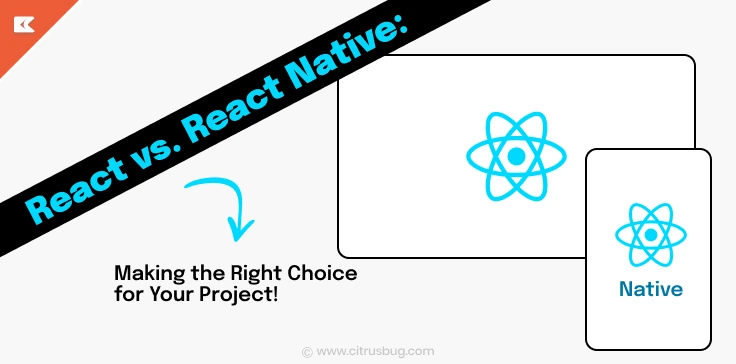The Ultimate Front End vs Back End vs Full Stack Guide
- April 26, 2023
-
2336 Views
- by Ishan Vyas
Nowadays, having a website for online presence has become a trend. Each business is making its digital name to be in a competitive market. Web development practices have raised expectations in the IT industry. As a result, web development has many job roles that differentiate the departments. Such as Full Stack developers, Front-End developers, and Back-End developers. The companies are looking to hire full-stack developers more as they take advantage of a combination of the other two roles. However, many software firms hire back-end developers and hire front-end developers per their requirements.
What is Web Development?
Web development is the mechanism for building a website or a web application. The central part of web development in creating a website is to work on technical aspects. Such as architecture, coding, API integrations, and graphics.
Well, let’s know about the web developer who works on the web development process. The web developer builds and maintains websites and web applications. They are the ones who transform the idea of web design into an actual website.
Furthermore, web developers can choose their specifications in frontend or backend development. If required, even as a full-stack developer.
In addition, web development has parts like Front-end, Back-end, and Full-Stack development. Eventually, Full Stack development includes the combination of Front-end and Back-end.
What is a Front-end Development?
The part of a website or application where users interact is called the Front-end. That means everything you scroll while navigating the internet is a part of the Front-end. Your computer’s browser uses a combination of HTML, CSS, and JavaScript. Front-end development manages everything from fonts and colors to drop-down menus and sliders.
Companies are looking to hire front-end developers with skills in coding the user interface and architecture of its captivating user experience designs.
To carry out those tasks, front-end developers must be proficient in three critical languages: HTML, CSS, and Javascript.
Furthermore, to have expertise in HTML, CSS, and JavaScript, frontend developers must know to work with frameworks like Bootstrap, Foundation, Backbone, AngularJS, ReactJS, and EmberJS. This results in an interactive and responsive appearance of the content. Besides, libraries package code in a more functional, time-saving manner, including jQuery and LESS.
When hiring dedicated front-end developers, clients inspect developers’ skills, from coding to debugging. The key point of front-end developers lies in the performance and responsiveness of their work.
What is a Back-End Developer?
The role of back-end developers contains the programming from the server side. The result of a smooth and flawless website or application depends on the back-end development. The back end is the nuts and bolts of the websites or applications. The backend developer creates and manages the code and structure of the website or an application.
The combination of web servers, server-side programming, and a database is a significant part of back-end development. Also, activities of coding, API integrations, and creating libraries are part of it.
Skilled back-end developers understand the difference between web servers like Apache or Ngnix. Also, coding languages like PHP, ROR, NodeJs, and Java, and databases like MySQL and MongoDB. Understanding how to implement the ETL Process to Connect MySQL to BigQuery can be an added advantage for back-end developers managing large-scale data migrations and integrations. Unifying business data across all channels with Google BigQuery integrations allows both developers as well as marketers and owners make faster, data-driven decisions, boost revenue, and maintain a competitive edge in their industry.
The demand for hiring dedicated backend developers is hitting the wave in Asian countries. The companies hire back-end developers to strengthen the coding and infrastructure part of their development department.
What is a Full Stack Developer?
A Full Stack Developer consists of the skills of both server and client-side development. The combination of working and managing the front-end and back-end development is the central part of full-stack development. Nowadays, the demand to hire full-stack developers is high and very helpful to software firms.
Full stack development involves executing the project from start to end. The full-stack developers are responsible for working on the user interface and developing the backend infrastructure, including the business logic and writing code.
A full-stack developer must have expertise in the given following languages.
- Frontend languages: JavaScript, CSS, HTML
- Backend languages: PHP, Python, Ruby, Java, NodeJS, etc.
- Databases: MySQL, MongoDB, etc.
If you are interviewing a full-stack developer, you must ensure that they have a working knowledge of the above languages. Advantages of hiring full stack developers include their ability to streamline the development process by understanding both frontend and backend requirements, leading to more cohesive and efficient projects.
The full-stack developers can project the evaluation by analyzing the requirements. And also test and debug the errors and make the website or an application up to the mark.
So, this concludes the fact that why companies are hiring more full-stack developers. Even clients prefer dedicated resources and hire full-stack developers for their projects.
Conclusion
Here, the final words describe the role and expertise of each development arena. An idea of why companies hire full-stack developers compared to others proves the popularity of full-stack development. Also, when it’s come to definite requirements, an expert is a favorable choice. The choice to hire front-end developers is to enhance the quality of user interface and client-side development. The back-end developer handles creating and managing the infrastructure of business logic and building the whole website or application with coding and integrating APIs. Hence, this results in more hire back-end developers by software firms.





 SaaS Development
SaaS Development Web Application Development
Web Application Development Mobile Application Development
Mobile Application Development Custom Software Development
Custom Software Development Cloud Development
Cloud Development DevOps Development
DevOps Development MVP Development
MVP Development Digital Product Development
Digital Product Development Hire Chatbot Developers
Hire Chatbot Developers Hire Python Developers
Hire Python Developers Hire Django Developers
Hire Django Developers Hire ReactJS Developers
Hire ReactJS Developers Hire AngularJS Developers
Hire AngularJS Developers Hire VueJS Developers
Hire VueJS Developers Hire Full Stack Developers
Hire Full Stack Developers Hire Back End Developers
Hire Back End Developers Hire Front End Developers
Hire Front End Developers AI Healthcare Software Development & Consulting
AI Healthcare Software Development & Consulting Healthcare App Development
Healthcare App Development EHR Software Development
EHR Software Development Healthcare AI Chatbot Development
Healthcare AI Chatbot Development Telemedicine App Development Company
Telemedicine App Development Company Medical Billing Software Development
Medical Billing Software Development Fitness App Development
Fitness App Development RPM Software Development
RPM Software Development Medicine Delivery App Development
Medicine Delivery App Development Medical Device Software Development
Medical Device Software Development Patient Engagement Software Solutions
Patient Engagement Software Solutions Mental Health App Development
Mental Health App Development Healthcare IT Consulting
Healthcare IT Consulting Healthcare CRM Software Development
Healthcare CRM Software Development Healthcare IT Managed Services
Healthcare IT Managed Services Healthcare Software Testing services
Healthcare Software Testing services Medical Practice Management Software
Medical Practice Management Software Outsourcing Healthcare IT Services
Outsourcing Healthcare IT Services IoT Solutions for Healthcare
IoT Solutions for Healthcare Medical Image Analysis Software Development Services
Medical Image Analysis Software Development Services Lending Software Development Services
Lending Software Development Services Payment Gateway Software Development
Payment Gateway Software Development Accounting Software Development
Accounting Software Development AI-Driven Banking App Development
AI-Driven Banking App Development Insurance Software Development
Insurance Software Development Finance Software Development
Finance Software Development Loan Management Software Development
Loan Management Software Development Decentralized Finance Development Services
Decentralized Finance Development Services eWallet App Development
eWallet App Development Payment App Development
Payment App Development Money Transfer App Development
Money Transfer App Development Mortgage Software Development
Mortgage Software Development Insurance Fraud Detection Software Development
Insurance Fraud Detection Software Development Wealth Management Software Development
Wealth Management Software Development Cryptocurrency Exchange Platform Development
Cryptocurrency Exchange Platform Development Neobank App Development
Neobank App Development Stock Trading App Development
Stock Trading App Development AML software Development
AML software Development Web3 Wallet Development
Web3 Wallet Development Robo-Advisor App Development
Robo-Advisor App Development Supply Chain Management Software Development
Supply Chain Management Software Development Fleet Management Software Development
Fleet Management Software Development Warehouse Management Software Development
Warehouse Management Software Development LMS Development
LMS Development Education App Development
Education App Development Inventory Management Software Development
Inventory Management Software Development Property Management Software Development
Property Management Software Development Real Estate CRM Software Development
Real Estate CRM Software Development Real Estate Document Management Software
Real Estate Document Management Software Construction App Development
Construction App Development Construction ERP Software Development
Construction ERP Software Development









